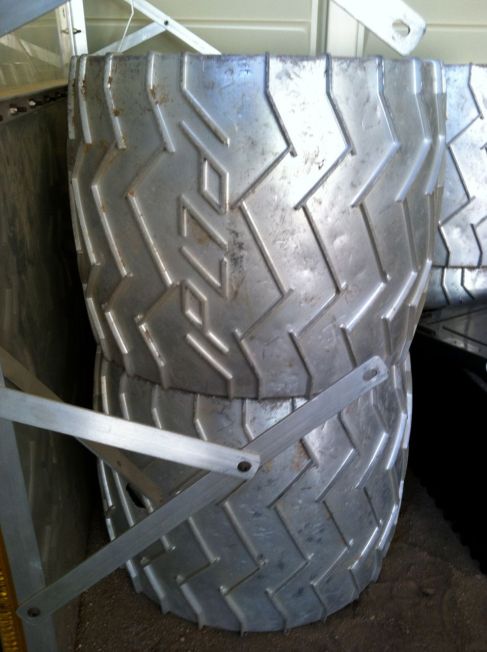Curiosity Gives A Wink And A Nod To JPL
Some of you are probably asking why are they using Morse Code code on the Curiosity Rover tires instead of just printing the letters JPL on the tires for Visual Odometry?
The original Engineering design and indeed the original Rover tested in the desert had tires that read JPL as they covered the landscape. Apparently, someone at NASA HQ (we are told by a reliable source) said “no, no, and no” to JPL on the tires. However, Visual Odometry remains an important part of this mission; a decision had to be made about how to accomplish this task.

Original engineering model tires in the back of a garage in the Mars Yard at JPL. photo credit: Hellwinger
Although we can’t say for certain, it would seem that using letters rather than random holes makes sense and given that there are three horizontal treads are devoted to odometric encoding on the Rover’s tires that would give them three letters to work with.
The rest is history as they say; a decision to use Morse Code gives the science and engineering team its Visual Odometry while conveying a sence of wonder and whimsy. For me, I like to think that every time Curiosity looks back at where it’s been, she sees a reminder of her first home, Jet Propulsion Laboratory.

